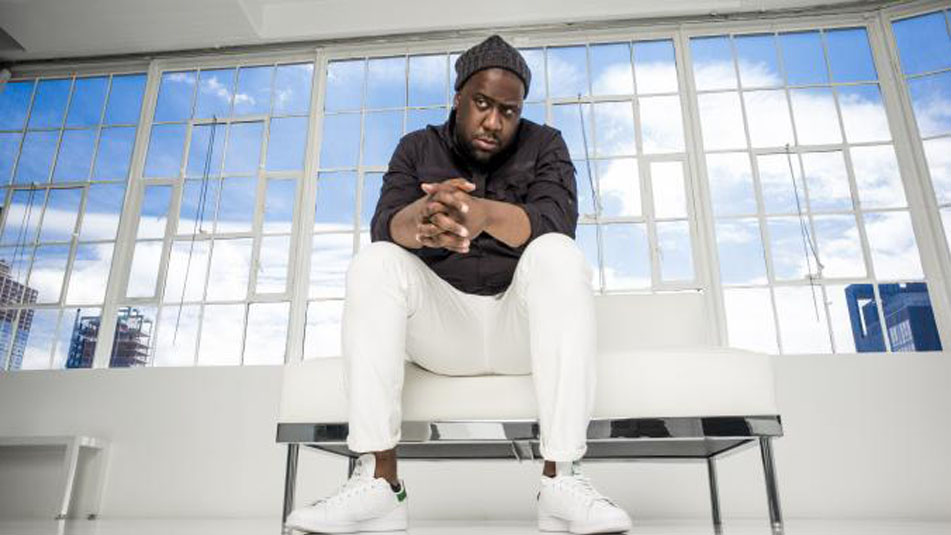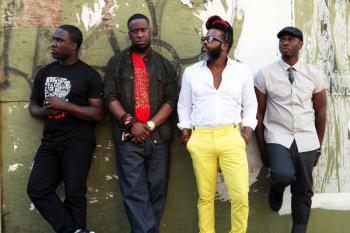THE SOUND OF NOW
ROBERT GLASPER’S MULTI-LINGUAL WORLD OF MUSIC
November 2, 2016 | by Richard Scheinin

“I tend to be low-key. But I am a fan of my albums representing the time period that we’re in – representing the good times and the bad.”
Robert Glasper
Not one to mince words, Robert Glasper describes Miles Davis as “a walking middle finger.” He says the trumpeter didn’t give a flying you-know-what if fans or critics complained about his new musical directions. “And that attitude allowed Herbie Hancock to do what he did, and it allowed Wayne Shorter to go out with Weather Report,” Glasper declares. “That’s how things are born. So Miles has taught me to be fearless and always open to change.”
“Change” barely covers what Glasper has been up to over the last 15 years or so, ever since he began to make a name for himself in New York City.
The Texas-born keyboardist, 38, is the de facto leader of a generation of multi-lingual musicians – authentic jazz players who are also authentic hip-hop players and down-in-the-groove R&B players. It’s not a matter of crossing over for Glasper and his cohorts: It’s how they grew up, what they listened to -- how they function as musicians. Aptly, SFJAZZ has dubbed this season’s concerts by the Robert Glasper Experiment as “The Sound of Now.” What better way to describe Glasper, whose recent activities include supervising the music for Don Cheadle’s Miles Ahead biopic, touring with his own acoustic jazz trio, co-producing Herbie Hancock’s upcoming album and performing with rapper Common at the White House?
“I’m like one of your old-time cats,” he says, a little bit cocky. “Back in the day, you’d call me for an Aretha Franklin session.”
 At SFJAZZ, you can expect the Experiment to perform songs from Art Science, its new album, which opens with 90 seconds of flame-thrower jazz -- “out” enough to satisfy ‘60s purists. That dissolves into a mournful anthem that Glasper likens to a Negro spiritual, before the album settles into track after track of pop essences: songs echoing Stevie Wonder and Earth, Wind and Fire, ‘70s jazz-rock and Steely Dan, Outkast and Radiohead. Lots more goes tumbling through the Experiment’s blender: “slugging” beats out of J Dilla, half-time swing reminiscent of Elvin Jones. There are long instrumental stretches -- the jazz infrastructure to the sleek pop production.
At SFJAZZ, you can expect the Experiment to perform songs from Art Science, its new album, which opens with 90 seconds of flame-thrower jazz -- “out” enough to satisfy ‘60s purists. That dissolves into a mournful anthem that Glasper likens to a Negro spiritual, before the album settles into track after track of pop essences: songs echoing Stevie Wonder and Earth, Wind and Fire, ‘70s jazz-rock and Steely Dan, Outkast and Radiohead. Lots more goes tumbling through the Experiment’s blender: “slugging” beats out of J Dilla, half-time swing reminiscent of Elvin Jones. There are long instrumental stretches -- the jazz infrastructure to the sleek pop production.
Unlike the group’s previous albums – including GRAMMY-winning Black Radio, which featured star turns from Eryka Badu, Mos Def and others – Art Science is all about the band. It’s a showcase for Glasper, saxophonist Casey Benjamin; bassist Derrick Hodge (who’s on tour this week with soul singer Maxwell; young bassist Burniss Travis will perform with the Experiment in San Francisco); and drummer Mark Colenburg. They wrote all the tunes. They handle all the singing – and sound like a bunch of romantics, crooning their soulful “I love you, I miss you” songs.
“Don’t forget the `I’m sorry’ songs,” Glasper says, wryly. “It’s basically the band’s story.”
It’s not all about romance.
As on earlier albums, Glasper connects to a tradition of protest music that extends from Max Roach to Marvin Gaye and Kendrick Lamar (whose groundbreaking To Pimp a Butterfly is suffused with Glasper’s keyboards). “I’m not a particularly talkative person in terms of politics,” he says. “I tend to be low-key. But I am a fan of my albums representing the time period that we’re in – representing the good times and the bad.” The new album’s anthem-spiritual is a memorial to young African-American men shot by police. Likewise, Art Science includes the spoken words of Glasper’s son Riley, responding to the 2014 shooting of Michael Brown in Ferguson, Missouri: “It’s not fair!” exclaims Riley, five at the time. “We should let other people live… Let’s try to make the polices better… like real polices that help. No gun shooting!.. We stand up for freedom!”
Well into his second decade as a professional musician, Glasper insists on musical freedom – his right to “go outside the box,” his mantra. On Art Science he brings a jazz sensibility to pop production. On Covered, from 2015, he brings pop production to what is essentially a live, jazz trio date: the acoustic bass and bass drum are boosted so high in the mix that they will make the speakers in your car rattle: “I like to do jazz that has some nuts in it, that makes you feel the music,” he explains. “A lot of times, jazz can be kind of light-in-the-ass. It doesn’t hit you hard in your soul like an R&B song or a hip-hop song. But then when you feel the bass drum or you feel the bass, it’s almost like it’s hip-hop. I love that aesthetic.
“I’m a jazz musician in the true sense of the word,” he says. “You know when jazz was mostly played by black people, back in the day?” he asks, with a rueful chuckle. “Those musicians would also be on Motown sessions; it was super-funky. And jazz was funky.”
John Coltrane played with Big Maybelle, Sam Rivers with T-Bone Walker. Michael Carvin was a Motown staff drummer – then jumped to Freddie Hubbard’s quintet.
And Glasper -- who will be 40 in two years, a middle-aged man -- pledges to “keep moving” like Miles, no matter what.
“You know what always keeps me afloat?” he asks. “Herbie Hancock did “Rockit” when he was 40. End of story. He’s one of the founders of hip-hop – and he was 40 years old! Because he stumbled across it. He was always searching, always open. So Herbie’s always been that kind of inspiration for me.
“I’d say my future looks bright.”
